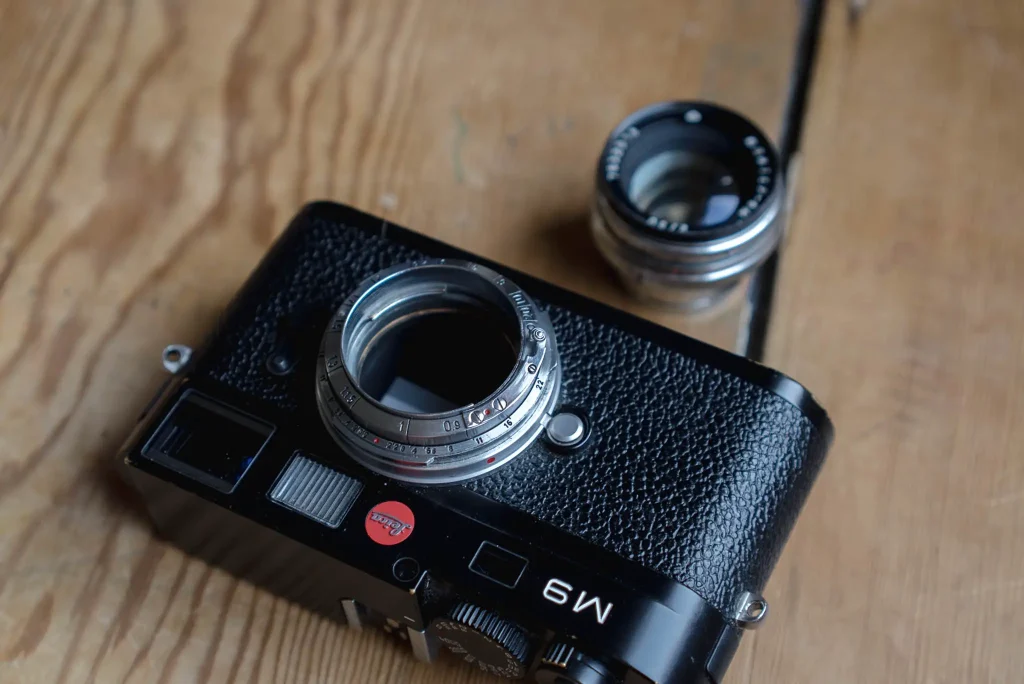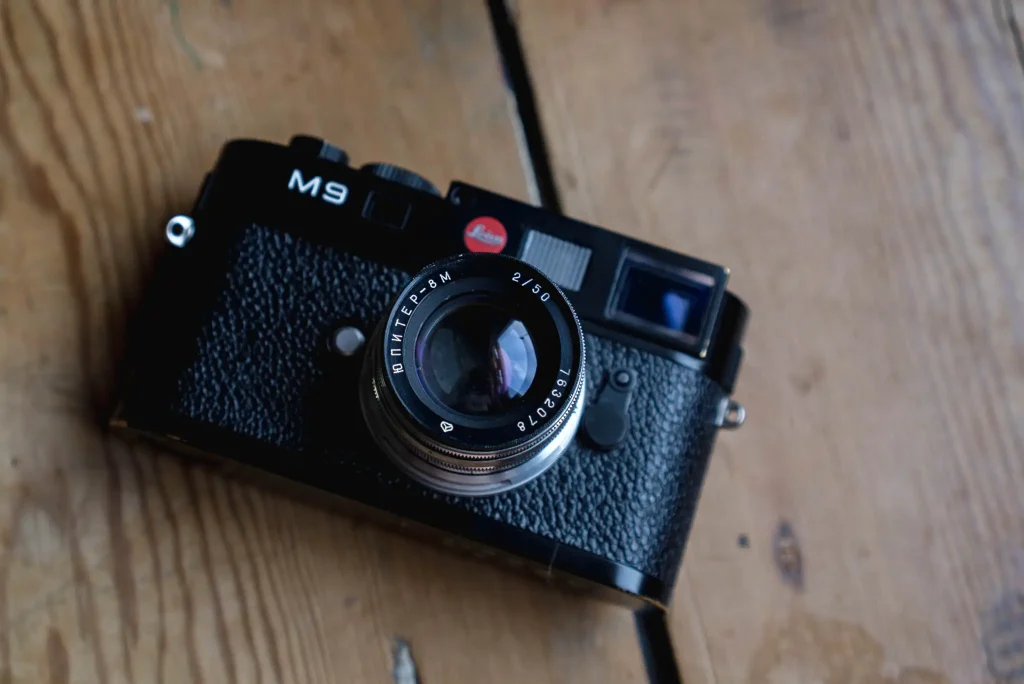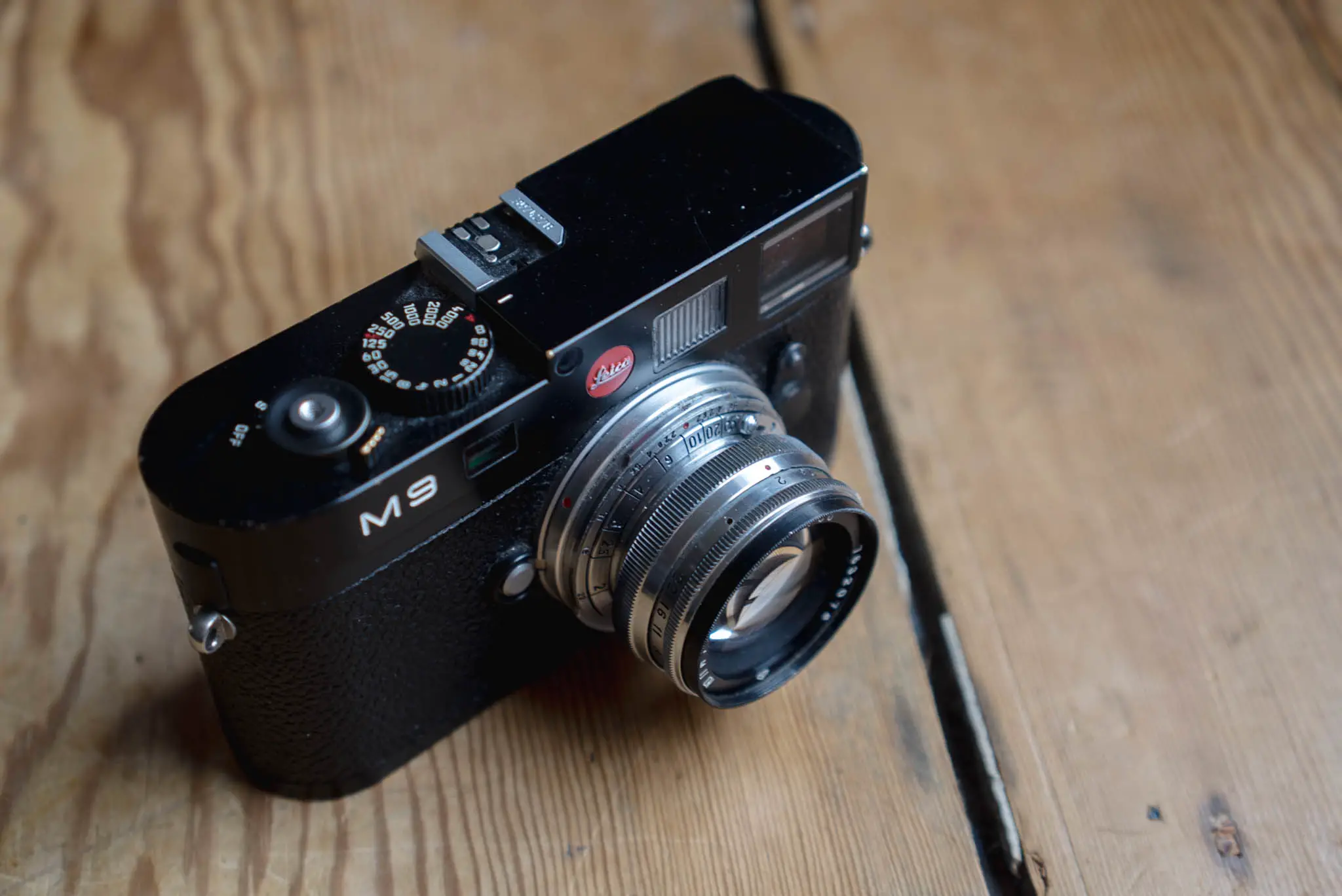After I posted the last instalment of this little journey to find my perfect classic Sonnar, I went straight out and shot a few photos with my Contax mount Jupiter-8M. My hopes for it being good were far exceeded, it turned out to produce quite fantastic results. So good in fact, that I’ve decided to concentrate my efforts on the Jupiter-8 family of lenses for a little while.
Of course, nothing in life is simple. Even concentrating my efforts on one single Sonnar type lens has revealed to me just how many variables there potentially is in all of this. But, before I get into the variables, I’d like to show you some of the photos that have had me so excited about the potential of the Jupiter-8. These were all taken on my M9, and have had relatively minimal post process applied to them.
Nice aren’t they?! They have quite a lot of the contrast I feel that I’m looking for, yet once a light source is introduced there’s plenty of potential for a nice bit of veiling flare. This feels like the basic combination of character traits that I’m looking for. So that’s that then, job done!
Well, not quite. It does take wonderful photos, but it’s far from perfect in terms of its handling. The biggest issue being derived from the fact that it’s actually a Contax mount lens being adapted to Leica mount. In theory, this shouldn’t be a problem, but in practice, it’s all got a little confusing and frustrating.
For a start, the adapter that I’m using isn’t a particularly high-quality one. It was given to me, and actually – despite what I am about to say probably sounding ungrateful – were it not for this donation I wouldn’t have gotten this far down the road. As such, I am very grateful (thanks again Erik).
Focusing frustrations
The problem with the lack of quality is in the focusing. If you don’t know anything about Contax rangefinder lenses, you might be unaware of the fact that the 50mm and longer lenses (edit: see comments – its only 50mm lenses that just use the inner mount) are focused by a focusing helicoid on the body of the camera. The lenses themselves don’t have focusing build in. What this means is that if you want to mount a Contax rangefinder lens to a Leica camera you need to have an adapter with a focusing helicoid built in. In the case of the adapter I was given, this focusing helicoid is a bit dry and a bit lose meaning it’s not exactly that nice to use. In fact, thanks to its dryness, I found myself unable to efficiently focus in time on a couple of occasions.

That’s problem 1. Problem 2 is that I don’t believe it to be particularly well calibrated. I have come to this conclusion based on testing it with 3 other lenses. My tatty “wild card” Sonnar and the two other Zeiss Sonnars of the previous post. I mention this adapter in both those posts. It was, in fact, the reason that I was unable to properly test the two Zeiss Sonnars. But if you look back at the “wild card” Sonnar post, you will see that I mention that it focuses nigh on perfect with that lens. It also focuses close enough to perfectly with this Contax mount Jupiter-8M. Of course, this could mean that the Jupiter-8M and “wild card” Sonnar are spot on and the two Zeiss Sonnars are out of whack, though I feel that’s less likely than the opposite.
The problem is, without the know-how to determine which pair of lenses are correct, I can’t readily seek to replace the focusing adapter with any kind of guaranteed outcome. Then, of course, there’s the fact that if I’m going to buy an adapter I’d ideally like to get an Amedeo one – which as mentioned in my previous post, is $249 that I just don’t have lying around at the moment… especially without the guaranteed result I’m looking for. It would also be a bit mad to spend $249 to mount a £20 lens!
So buy a Leica thread mount Jupiter-8?
The obvious answer to this might seem to be to buy an LTM mount Jupiter-8. In fact, I am almost definitely going to do that. The problem with that path is that it’s also fraught with potential complications. The first is that Jupiter-8 lenses aren’t exactly known for their quality control. As far as I understand it, they’re also not perfectly calibrated to Leica cameras, instead, they’re a better match to the Soviet cameras they would have been made for. There are also loads of different versions of the Jupiter-8 (see here, and here).
At this point, I ground to a bit of a halt with my Jupiter-8 joy and started thinking down other paths – if I wanted to use it, I could just use it on the adapter I had, or maybe it would work somewhere further down the road if I bought an Amadeo adapter. I am also still looking for a Canon 50mm 1.5, and have been tempted by the idea of looking at a Jupiter-3 too, so I defaulted back to searching for one or another of these. In fact, it was a faulty Jupiter-3 on eBay that reinvigorated the Jupiter-8 path.
Brain “Sonnar” Sweeney
If you’ve not come across Brian “Sonnar” Sweeney then you’ve clearly not spent as much time browsing Sonnar related info on forums. I actually came across Brian’s name many years ago. Unbeknownst to both of us, sometime around a decade ago (I think) we both had the idea to try and hack the poor little Industar-69 lens to work on Leica mount cameras. You can read my rather cringeworthy tutorial on my very old blog here. Through the process of this experience, I came across Brian’s name – a name that I would find relevant to my various searches online many more times in the near-decade since. Brian is by all accounts a lens guru. As far as I can gather, he’s probably forgotten more than I will ever know.
I don’t know when Brian first became aware of my existence, but the first interaction I recall was when he commented on my Jupiter-3+ review. Since then, we have chatted sporadically via email on a variety of subjects – including his somewhat famed ability to fix Sonnar lenses. So, when I saw a dicky Jupiter-3 on eBay, he instantly came to mind. I emailed him asking him for some thoughts, and whilst he said he could probably fix the Jupiter-3 in question he also all but warned me off it. It was at that point the conversation moved on to my path so far. I told him where I was up to and how much I’d enjoyed the results from my Jupiter-8, and how I was a little stuck in terms of moving forward. He had some interesting things to tell me about my Jupiter-8M.

The Jupiter-8M
If you look at the front of my Jupiter-8 you will see it’s actually a Jupiter-8M. As it turns out, the Jupiter-8M is specifically one of the Contax mount versions. Not only this but according to Brian the optical formula is actually slightly different. Brain tells me that in his experience, the formula is actually closer to that of the Jupiter-17.
The Franken-8M
It was at this point that Brian told me there was a way that my really nice Jupiter-8M could be converted to Leica thread mount without any particularly great expense. In fact, not only this, but that is actually a fairly regular source of Jupiter-8M lenses in Leica thread mount on eBay. As it turns out, one of the other well-known Russian lenses – the Industar-26 – can be hacked to house the optics of a Jupiter-8M. Not only this, but there is an eBay seller called Grandseller who does these hacks.

Brian then went on to tell me that if I bought one of these hacked lenses, if I wasn’t satisfied with it I could send him both my Jupiter-8M lens and the one from the chap in Russia and for a few $$ he would combine them using the best parts of both. The result of this would be that my lovely Jupiter-8M glass would be in a lens mount that would fit straight on to my Leica cameras, it would focus perfectly at f/2, and it would – having had Brian do his magic on it – be in fine fettle too. This was an offer I found it very hard not to take him up on!
I am currently awaiting the arrival of a Franken-8M lens from Russia – which when it arrives will no doubt be the subject of next instalment of this story…
(The next instalment turned out to be about late model black LTM J-8s – find it here)
Cheers,
Hamish
Share this post:
















Comments
Frank Lehnen on Jupiter-8M (Contax Mount) – Finding my perfect classic Sonnar PT4
Comment posted: 30/04/2017
Comment posted: 30/04/2017
Don on Jupiter-8M (Contax Mount) – Finding my perfect classic Sonnar PT4
Comment posted: 30/04/2017
Comment posted: 30/04/2017
Rob on Jupiter-8M (Contax Mount) – Finding my perfect classic Sonnar PT4
Comment posted: 30/04/2017
Comment posted: 30/04/2017
Blinx on Jupiter-8M (Contax Mount) – Finding my perfect classic Sonnar PT4
Comment posted: 30/04/2017
Wide open the J8 is definitely soft, good for a 10 x 8", but pixel peepers should be prepared for a glowing blur when they hit the magnifying icon. It improves from there on, even f2.8 sharpening things noticeably while still giving glowing, rounded highlights. I also own a Jupiter 12 35mm 2.8 in Contax bayonet, which renders similar to the J8 but flares like a crazy thing - they all do apparently, probably owing to the huge convex rear element - some people love this flaw. I haven't bothered with a digital adapter as opinions vary on the wisdom of introducing that massive back element to a sensor.
Nice review Hamish.
Comment posted: 30/04/2017
Comment posted: 30/04/2017
Comment posted: 30/04/2017
Cheyenne Morrison on Jupiter-8M (Contax Mount) – Finding my perfect classic Sonnar PT4
Comment posted: 30/04/2017
I'm sending to Kanto Camera in Japan for complete rebuild, and will post images once it's back.
The lens was designed for the Zeiss Ikon Contax S, which was one of the first SLR cameras in the world, because of the internal mirror they had to come up with a new lens. The camera came with the 58mm f/2 Biotar, which was the basis for the Soviet Helios lenses, famous for their swirly bokeh. I cannot find any record of why they changed from a Sonnar to the Biotar, but l appear to own the very first M42 mount Sonnar ever made. M42 later went on to be called Pentax mount, and there is a massive selection of lenses and cameras for M42 mount.
However, sadly for you M42 - Leica adapters seem difficult to find, l've seen a handmade one by a Soviet eBayer. Maybe your Sonnar expert mat like to know about my lens, and advise you about an adapter?
Probably the most kick ass Sonnar in the world is the Carl Zeiss Jena 75mm f/1.5 whose bokek is just off the charts. The majority were in Exa and M42 mount, but luckily for you it also came in Contax mount which will work with your adapter. Check out Flickr for images shot with this lens, which I would say is the King of Sonnars.
Comment posted: 30/04/2017
Terry B on Jupiter-8M (Contax Mount) – Finding my perfect classic Sonnar PT4
Comment posted: 01/05/2017
You've been travelling an interesting road in the search for your perfect lens, and it has been a fascinating read. One small, but important correction. I don't know from where, or from whom, you got your info about focusing Contax r/f lenses, but you have it wrong.
It is the 50mm lenses rely solely on the inner bayonet in-body helicoid mount as none - the f1.5, f2 Sonnars or f3.5 Tessar, have focusing helicoids of their own and the fore and aft movement of this helicoid is set uniquely for r/f coupling of the 50mm lenses. All other lenses, including the 35mm Jupiter 12, attach via the non-moving external bayonet and thus all these have to have their own, conventional, focusing helicoids. They link to the body helicoid only to couple with the inner bayonet for the rangefinder.
All rangefinder coupling lenses other than the 50mm have to have internal cams to compensate for all the different fore and aft movements needed to compensate, otherwise they won't couple with the rangefinder. The resistance of the coupling mechanism makes focusing all these lenses almost impossible, or painful, using the little finger wheel used for the 50's, hence why these lenses are focused conventionally.
Interestingly, the little 28mm Orion-15 and the original Biogon are none-r/f coupled and are thus scale focus only. Of course, all lenses can be scale focused, as this is the only way to "guesstimate" DoF.
Comment posted: 01/05/2017
Comment posted: 01/05/2017
Comment posted: 01/05/2017
Arthur Silve on Jupiter-8M (Contax Mount) – Finding my perfect classic Sonnar PT4
Comment posted: 02/05/2017
I'm following your quest for your perfect sonnar with interest. I'm also trying not to buy a canon 1.5 !
As for myself, I have been very lucky with a ltm J8 from 1959 that was perfeclty calibrated to leica specs when I purchased it. Only the lack of click stops bothers me (altought now I cleaned and relubed everything the aperture ring is very smooth) It is really pretty on my IIIC.
I have been less lucky with a J3 that seemed ok, but has suffered a fall and was badly repaired afterwards.
I thought of coupling a J8M optics module to a J8 mount but I soon realised they have a different design. I didn't know that a I26 mount would do the trick ! Good to know.
Concerning contax mount lenses, Only 50mm goes in the internal mount because it also acts as a focusing ring. Any other focal lenght requires the external mount so the focusing mount only register the distance, and let the optics move at a different rate to ensure correct focus. It is not a simple design.
Since you have an adapter (even a whacky one) have you tried the helios 103? It has an excellent reputation. Althought it may be too sharp for your tastes ! The optical design is said to be similar to the summicron 1st gen . they are even cheaper than a J8M. I had one on a kiev and it really was sharp, but I never got used to the dark viewfinder on the kiev rf.
Comment posted: 02/05/2017
Terry B on Jupiter-8M (Contax Mount) – Finding my perfect classic Sonnar PT4
Comment posted: 03/05/2017
What may have confused you is that the inner helicoid, and hence the bayonet, is actually used for rangefinder coupling, and this is its sole function when used with the longer focal lengths, and of course, the 35mm, although the lenses can be scale focused if necessary and, as I've said, it is necessary with the 28mm.
R/f coupling with lenses other than the 50's brings with it its own problems owing to the method Zeiss employed, and in my experience it feels cruder, and less smooth, in practice than Leica's cams mating with a cam follower. The coupling tubes inside the Zeiss lenses are designed to mate with the inner helicoid and this in turns results in the complete helicoid being rotated. The resistance this induces can easily be felt if the inner helicoid is stiff from lack of a CLA. Focusing then feels very notchy, not smooth as with other r/f cameras relying on cam followers.
Otherwise, I know of no official Zeiss Contax tele/long focus lens that uses the inner bayonet. But they did make lenses up to a 500mm f8 for the reflex housing.
Comment posted: 03/05/2017
Jon Knowles on Jupiter-8M (Contax Mount) – Finding my perfect classic Sonnar PT4
Comment posted: 20/07/2018